In which Sid and Doris visit the National Museum of Industrial Heritage at Bethlehem steel works, a perfect diner and friends in Maryland.
The Sayre mansion looks across town to the steel works where the stacks are still some of the tallest structures. Starting out as an iron foundry in 1861 the mill soon turned to rolling rails for the fast expanding railroad companies. The later move to steel rail meant rails lasted three times longer. All of our reader(s) will of course remember being taught about the Bessemer Process in school so there is really no need to include this explanatory link: https://en.wikipedia.org/wiki/Bessemer_process
At this time ship building was moving from sail to steam and wood to iron and steel. Though after the American Civil War spending on the navy wound down, in 1886 Congress passed a naval appropriations bill. In association with Whitworth (from Manchester. See also Whitworth nuts, bolts etc) Bethlehem Steel moved to making armour plate and naval guns.
Anyone who has ever had management consultants work with them on improving processes will delight to know Frederick Winslow Taylor applied his principles of scientific management to increase productivity.
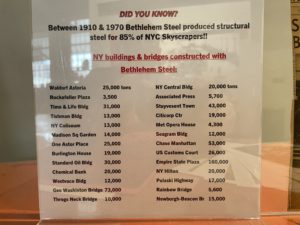 A major product line was H beams for construction. (Sid would have preferred to say I beams but the capital I in this font tells you nothing about the cross section.) There is a table of glory to include such as the Golden Gate Bridge and many of New York’s best known skyscrapers. The picture of the list has not come out too well but just look at the thousands of tons of steel in New York alone.
A major product line was H beams for construction. (Sid would have preferred to say I beams but the capital I in this font tells you nothing about the cross section.) There is a table of glory to include such as the Golden Gate Bridge and many of New York’s best known skyscrapers. The picture of the list has not come out too well but just look at the thousands of tons of steel in New York alone.
In 1913 the firm acquired Fore River Shipbuilding so owning coal and ore mines along with their own railroads resulted in a large vertically integrated firm. Henry Ford took a similar approach. War time was very profitable for Bethlehem and at its peak the works employed 30,000 people (including Rosie Riviters) across a site served by 150 miles of their own railway. There is a beautifully colour-coded model of the site [which proved difficult to justice to in photographs, sorry – D].
The giant combine played its part in the arsenal of democracy turning out a ship a day through 1943 and providing as much as 70% of steel for US aero engine blocks. Ships require really big gearboxes. These double helical gears are just like we will have in our Alvis, though smaller. See the cars in the picture for scale.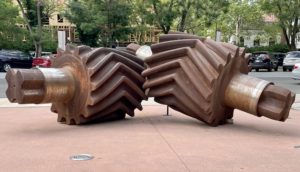
While the Japanese and European steelworks were being rebuilt Bethlehem prospered with peak production coming in the 1950s. Their workers went on to live longer than actuaries had predicted and so pension liabilities rose. These unforeseen liabilities along with Chinese and Indian competition led to plant’s closure in 1995.
The National Museum of Industrial Heritage tells this story in just one of the steel and brick buildings. All the rail has been taken up. It is possible to walk along a trestle to see the foundry buildings but, unlike the Zollverein mine, there are no tours.
Sid and Doris read the panels and delight in the displays of machine tools and engines – machines to make machines. Here is a bevel gear cutter and something else pretty too.
Some of the engines on display could power whole factories. The museum offers the chance to measure your own output.
 Doris says Sid’s recent work steering the Firefly will surely make him super-human, and so it proves …. Briefly.
Doris says Sid’s recent work steering the Firefly will surely make him super-human, and so it proves …. Briefly.
The Trio, as Mr Silk says, turn for Maryland and friends with the JGG rumbling sweetly along the freeways until we stop at Doris’s great find. Not a Wendys (eye-rollingly awful and don’t even serve cawfee) but a proper diner with a boss who may be related to Margaret Houlihan (and if you don’t know please look her up on www.mash.fandom.com ).
The Epic Journey to New Orleans is paused. Now Doris will go back up the road to Wilmington Delaware for Atlantic Harmony Brigade and some Extreme Barber Shop Quartet singin’ while Joe will put Sid to work on sailing boats and cars.
It is a tough life but …
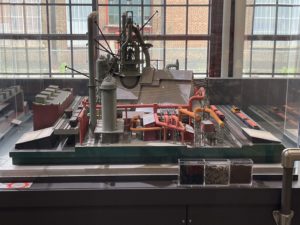

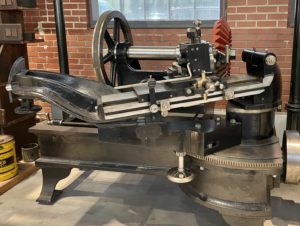
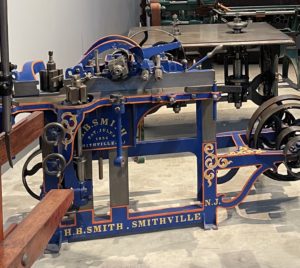
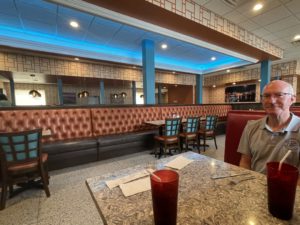
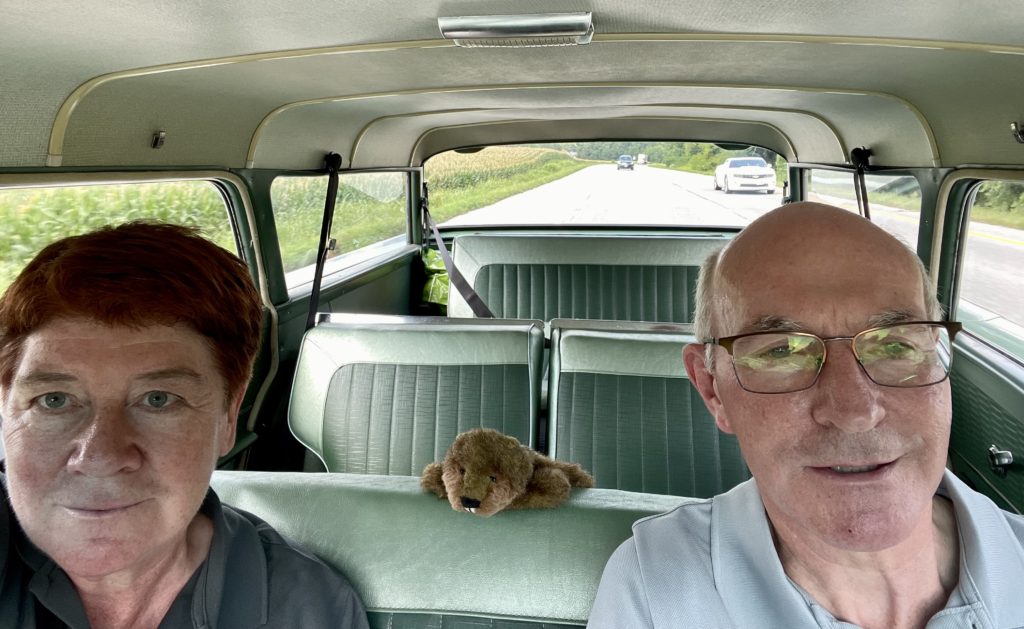
“It is a tough life but …”
Make that sentence the opener to your book, when you get round to compiling it 😉
Cracking last pic of Sid & Doris ….also (I’m guessing name based on tags) of Mifter Bat, who is sure enjoying the ride
Ha ha that is the Silk, our famous mascot for cycling journeys. He spends most of the time on this trip sitting between us on the front seat, trying to make the traffic lights turn green. Also spotting railways and making woo-woo train noises when going over level crossings, of which there are many.